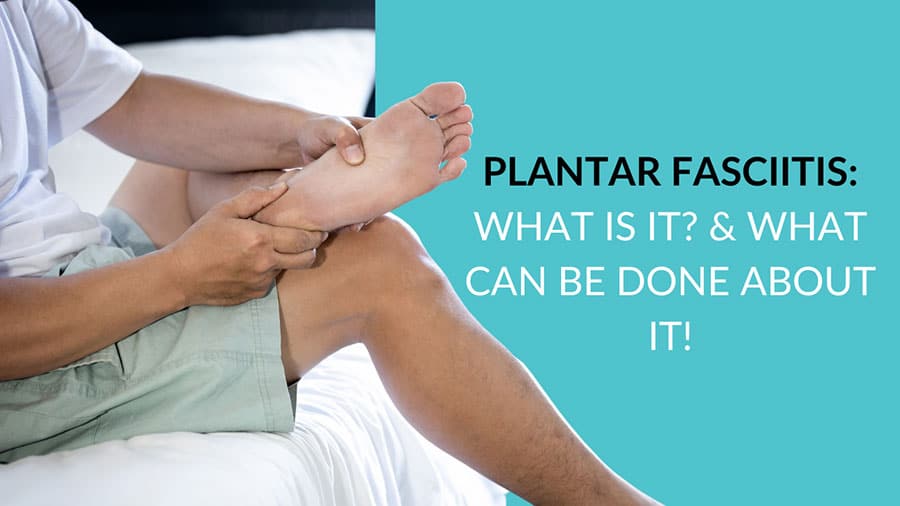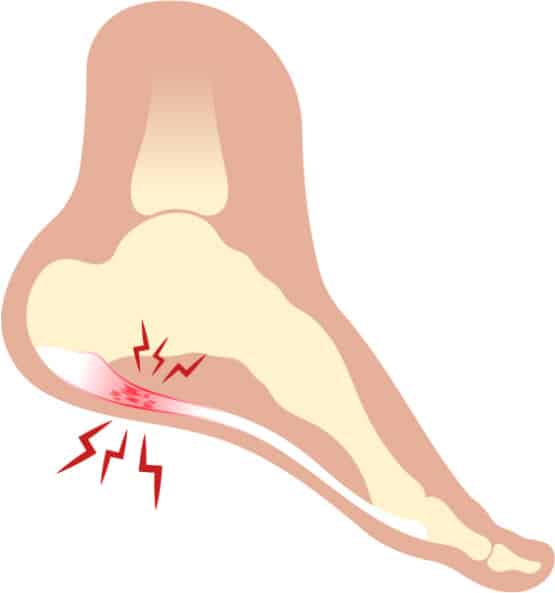Plantar Fasciitis - What is it? How to know if you have it, and what can be done about it!

Plantar Fasciitis – What is it? How to know if you have it, and what can be done about it!
Plantar fasciitis is a common yet often misunderstood foot condition that affects millions of people worldwide.
Known for causing significant discomfort, it can hinder daily activities and affect your quality of life. In this blog, we’ll explore what plantar fasciitis is, its common names, how to identify if you have it, and effective treatment options.
What is Plantar Fasciitis?
Plantar fasciitis is an inflammation of the plantar fascia, a thick band of tissue that runs along the bottom of your foot, connecting your heel bone to your toes. This tissue supports the arch of your foot and plays a crucial role in your ability to walk, run, and perform various weight-bearing activities.

Common Names for Plantar Fasciitis
Plantar fasciitis is known by several other names, including:
– Policeman’s Heel: Named after the condition’s prevalence in people who spend long periods on their feet.
– Runner’s Heel: Reflecting its common occurrence among runners and athletes.
How to Know if You Have Plantar Fasciitis
Identifying plantar fasciitis can be straightforward if you are aware of its hallmark symptoms. Here’s what to look out for:
Symptoms
1. Heel Pain: The most common symptom is a stabbing pain in the heel, particularly noticeable with the first steps in the morning or after long periods of rest.
2. Pain After Activity: While the pain usually decreases during activity, it can return and intensify after prolonged periods of standing or exercise.
3. Stiffness and Tenderness: You may experience stiffness in the arch of your foot and tenderness when pressing on the heel or the bottom of the foot.
Diagnosis
To diagnose plantar fasciitis, a healthcare professional will typically:
– Review your medical history and symptoms.
– Conduct a physical examination of your foot, looking for areas of tenderness and observing your gait.
Treatment Options for Plantar Fasciitis
While plantar fasciitis can be quite painful, there are several effective treatment options available. These range from at-home remedies to medical interventions:
At-Home Remedies
1. Ice: Applying ice packs can reduce inflammation and alleviate pain.
2. Stretching & Strengthening Exercises: Regular stretching and Strengthening of the Achilles tendon, calf muscles, and plantar fascia can help relieve tension and improve flexibility.
3. Footwear: Wearing supportive shoes with good arch support and cushioned soles can prevent further strain on the plantar fascia. Avoid walking barefoot on hard surfaces.
Medical Treatments
1. Physiotherapy: A therapist can guide you through exercises and treatments designed to strengthen the muscles around your foot and ankle, improving stability and reducing strain on the plantar fascia.
2. Medications: Nonsteroidal anti-inflammatory drugs (NSAIDs) like ibuprofen can help manage pain and inflammation BUT THIS ONLY MASKS THE ISSUE.
3. **Corticosteroid Injections:** In some cases, corticosteroid injections can provide temporary relief from severe pain by reducing inflammation – we do not recommend this due to the poor success rate and the risk of increased pain!
4. Extracorporeal Shock Wave Therapy (ESWT): This non-invasive treatment uses to jump start the healing process in the plantar fascia.

Conclusion
Plantar fasciitis, while common and often painful, can be effectively managed with the right combination of treatments. Early recognition of symptoms and prompt intervention are key to preventing long-term discomfort and allowing you to maintain an active lifestyle. If you suspect you have plantar fasciitis, please email us: info@activemotion.uk or call us on: 07368286175 to discuss how you can over come your heel pain!
Request A Call Back
If you'd like to get more information or discuss your condition with a professional, use the form to register for your FREE call back.
Free Consultation
Schedule your free consultation so we can learn more about your pain and how we can fix it.
Find Out Cost & Availability
Enquire about the pricing and availability of our services.
